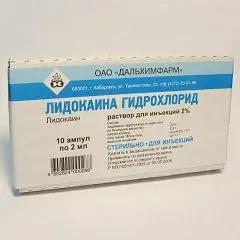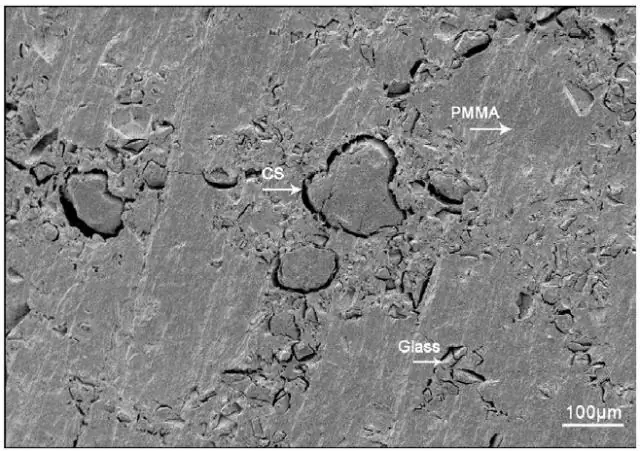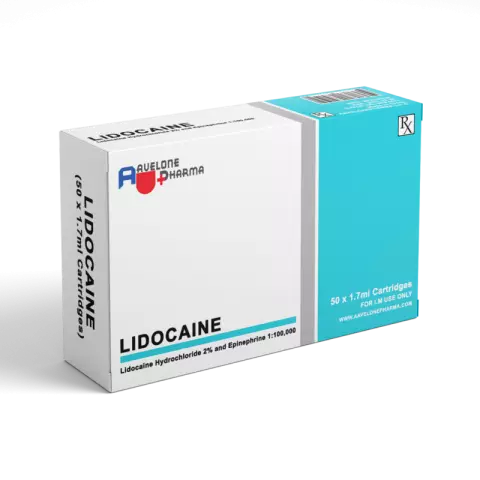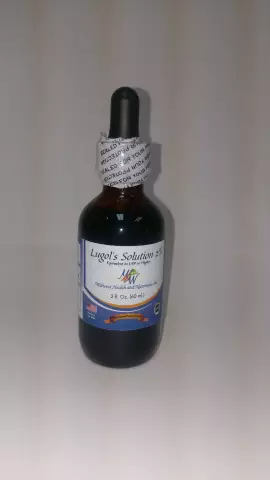- Author Rachel Wainwright [email protected].
- Public 2023-12-15 07:39.
- Last modified 2025-11-02 20:14.
Lidocaine hydrochloride
Lidocaine hydrochloride: instructions for use and reviews
- 1. Release form and composition
- 2. Pharmacological properties
- 3. Indications for use
- 4. Contraindications
- 5. Method of application and dosage
- 6. Side effects
- 7. Overdose
- 8. Special instructions
- 9. Application during pregnancy and lactation
- 10. Use in childhood
- 11. In case of impaired renal function
- 12. For violations of liver function
- 13. Use in the elderly
- 14. Drug interactions
- 15. Analogs
- 16. Terms and conditions of storage
- 17. Terms of dispensing from pharmacies
- 18. Reviews
- 19. Price in pharmacies
Latin name: Lidocaine hydrochloride
ATX code: N01BB02
Active ingredient: lidocaine (Lidocaine)
Manufacturer: JSC Borisov Plant of Medical Products (JSC BZMP) (Republic of Belarus); PJSC Galichpharm (Ukraine), JSC Veropharm (Russia), PJSC Biosintez (Russia), JSC Dalkhimpharm (Russia)
Description and photo update: 2019-09-07

Lidocaine hydrochloride is a drug with a local anesthetic effect.
Release form and composition
Dosage form - injection solution: transparent colorless or somewhat yellowish (1% solution - in 5 ml ampoules, in a cardboard box 2 packs of 5 or 10 ampoules; 2% solution - in 2 ml ampoules, in a cardboard box 1 pack of 10 ampoules and instructions for the use of Lidocaine hydrochloride).
Composition of 1 ml solution:
- active substance: lidocaine hydrochloride - 10 or 20 mg;
- auxiliary components: sodium hydroxide, sodium chloride, water for injection.
The composition of the auxiliary components may vary depending on the manufacturer.
Pharmacological properties
Pharmacodynamics
Lidocaine hydrochloride is a local anesthetic. The effect of the drug is due to the stabilization of the neuronal membrane due to a decrease in its permeability to sodium ions, which prevents the appearance of an action potential and, as a result, the conduction of nerve impulses. Antagonism with calcium ions may occur.
The use of lidocaine hydrochloride is effective for all types of local anesthesia. It helps to suppress the conduction of both pain impulses and impulses of a different modality. In a weakly alkaline environment of tissues, the substance is rapidly hydrolyzed and after the end of a short latency interval has an effect for 1-1.5 hours.
The strength of the anesthetic effect of lidocaine exceeds that of procaine by 2-6 times. Anesthetic activity decreases against the background of inflammation. When applied topically, vasodilation is noted, lidocaine does not have a local irritating effect.
Pharmacokinetics
C max (maximum concentration) in the blood after intramuscular injection is reached in 5-15 minutes. In plasma, lidocaine binds to blood proteins at a level of 33-80%. The degree of binding is significantly determined by the concentration of the drug and the plasma content of alpha-1-acidglycoprotein in the blood. In patients with uremia and in renal transplant recipients, binding to plasma proteins increases, the binding process increases after acute myocardial infarction, which is characterized by an increase in the level of alpha-1-acid glycoprotein. Due to the high binding to proteins, a decrease in the effect of free lidocaine or the development of a general increase in the plasma concentration of a substance in the blood is possible.
The emergence of a therapeutic effect is observed at a concentration of 0.000 15-0.000 5 mg / ml. Lidocaine is rapidly distributed in tissues, V d (volume of distribution) - 1 l / kg. First, the substance comes into tissues with high rates of blood supply: the brain, lungs, kidneys, spleen, liver, heart, and then into muscle and adipose tissue. Easily penetrates the histohematogenous barriers, including through the placental and blood-brain.
In the body of a newborn, lidocaine is found in a concentration of 40-55% of that in the mother's body.
Metabolism occurs in the liver, microsomal enzymes are involved in the process. As a result, the formation of metabolites occurs: glycinexylidide and monoethylglycinexylidide. The metabolic rate depends on blood flow in the liver and, as a result, may be impaired in patients with congestive heart failure and / or in patients after myocardial infarction.
Excretion from the body is carried out by the kidneys in the form of an unchanged substance (depends in part on the pH of urine) or metabolites (approximately 10 and 90%, respectively). Acidic urine causes an increase in the fraction excreted by the kidneys. After an intravenous bolus, T 1/2 (half-life) is 1.5-2 hours. T 1/2 in patients with impaired liver function may increase.
Indications for use
- infiltration, epidural and conduction (nerve block) anesthesia;
- anesthesia of the toes, hands, nose, ears and penis, or other cases when the use of adrenaline is contraindicated.
Contraindications
Absolute:
- severe arterial hypotension, cardiogenic or hypovolemic shock (in the case of using Lidocaine hydrochloride for epidural anesthesia);
- simultaneous use with adrenaline for anesthesia of toes, hands, nose, ears, penis;
- aggravated history of hypersensitivity to local anesthetic drugs or other amides, and epileptiform seizures to the administration of lidocaine;
- children under 1 year of age (for 1% solution);
- children and adolescents up to 18 years old (for a 2% solution);
- individual intolerance to the components of lidocaine hydrochloride.
Also, general contraindications for carrying out one or another type of anesthesia should be taken into account.
Relative (lidocaine hydrochloride is prescribed under medical supervision):
- severe kidney and liver disease;
- severe general condition;
- myocardial conduction disorders, including sick sinus syndrome, atrioventricular block of varying degrees, severe bradycardia, etc. (since local anesthetics can lead to a violation of myocardial conduction);
- combined use with class III antiarrhythmics, for example, with amiodarone (patients should be closely monitored and ECG monitored);
- epilepsy;
- myasthenia gravis;
- respiratory failure;
- porphyria;
- age 1-4 years (for 1% solution);
- elderly age;
- pregnancy and lactation.
Lidocaine hydrochloride, instructions for use: method and dosage
The dosage regimen of Lidocaine hydrochloride solution for local anesthesia is determined by the type of anesthesia and the nature of the surgical intervention.
The drug should be administered by doctors who have appropriate experience in conducting regional anesthesia (or the procedure must be carried out under their supervision).
The smallest dose should be administered to achieve the desired effect.
Mode of application:
- infiltration anesthesia: up to 30 ml of 1% solution;
- dental practice: 1-5 ml of a 2% solution;
- anesthesia of toes, hands, nose, ears, penis: 2-3 ml of 1% solution (only lidocaine without adrenaline);
- paracervical anesthesia: 10 ml of 1% solution in each direction;
- conduction anesthesia: 1 and 2% solution is used in doses not higher than the maximum total adult doses.
Application of Lidocaine hydrochloride solution for epidural anesthesia:
- lumbar spine: 25-40 ml of 1% solution;
- thoracic region, sacral area in obstetrics: 20-30 ml of 1% solution;
- sacral area in surgery: 1% solution, maximum dose - 40 ml.
The maximum recommended total doses: 1% solution - 40 ml; 2% solution - 20 ml.
The average daily dose should be reduced when used in children and patients with impaired hepatic and renal function.
Elderly patients are advised to reduce the dose of Lidocaine hydrochloride, commensurate with age.
Side effects
- psyche: anorexia, hallucinations, restlessness, irritability, depression; when used in high doses - euphoria, agitated state;
- cardiovascular system: in the case of high doses - peripheral vasodilation, tachycardia, collapse, bradycardia, arrhythmia, transverse heart block, slowing of heart conduction, pain in the heart, cardiac arrest, increase / decrease in blood pressure;
- nervous system: excitation of the central nervous system (if used in high doses), sensory disturbances, confusion, drowsiness, sleep disturbance, headache, anxiety, dizziness, loss of consciousness, coma, muscle twitching, numbness of the lips and tongue (if used in dentistry), dysarthria, persistent anesthesia, dysphagia, motor block, elegy or paresis of the lower extremities and loss of sphincter control, tremor, motor restlessness, trismus, euphoria, convulsions, paresthesia, skin tingling in patients with hypersensitivity;
- digestive system: nausea / vomiting;
- immune system: generalized exfoliative dermatitis, suppression of the immune system, angioedema, urticaria, allergic reactions (including edema), skin reactions, itching, hypersensitivity reactions (including anaphylactoid reactions, including anaphylactic shock);
- respiratory system: rhinitis, shortness of breath, depression / respiratory arrest;
- sense organs: visual impairment, nystagmus, diplopia, reversible blindness, flashing before the eyes of flies, conjunctivitis, photophobia, hyperacusis, hearing impairment, tinnitus;
- local reactions (at the injection site): hyperemia, a slight burning sensation (disappears with an increase in the anesthetic effect within one minute). With epidural or spinal anesthesia, there may be pain in the legs, back, complete / partial spinal block, accompanied by impotence, impaired defecation, decreased blood pressure, involuntary urination, loss of sensitivity in the perineum (the risk of developing these disorders increases with the use of high doses or with accidental injection of lidocaine into the spinal space when a dose is received there that is intended to be injected into the epidural space); after such an intervention, in some cases, the resumption of motor, autonomic and / or sensory function occurs incompletely or slowly (after several months);
- others: malignant hyperthermia, weakness, edema, feeling of numbness of the limbs, cold or heat.
Overdose
In case of an overdose of lidocaine, there may be an increase in adverse reactions.
The main symptoms: general weakness, coma, AV blockade, apnea, drowsiness, depression, asphyxia, agitation, dizziness, decreased blood pressure, tremor, visual impairment, tonic-clonic seizures, collapse, ringing in the ears, anxiety. In case of a significant overdose, the following are possible: respiratory depression, impaired consciousness, myocardial infarction, shock.
The first symptoms of an overdose usually develop when the concentration of lidocaine in the blood exceeds 0.006 mg / kg, convulsions - at a concentration of 0.01 mg / kg.
Therapy: stopping the administration of the solution, carrying out oxygen therapy, using vasoconstrictors (mezaton, norepinephrine), antiepileptic drugs, anticholinergics. It is necessary to transfer the patient to a horizontal position, provide him with fresh air, oxygen supply and / or artificial respiration.
Central nervous system disorders should be corrected with benzodiazepines or short-acting barbiturates. If an overdose occurs during anesthesia, it is necessary to use muscle relaxants with a short-term effect.
Other activities (depending on indications):
- arterial hypotension: sympathomimetics in combination with β-adrenergic receptor agonists;
- conduction disturbances, bradycardia: intravenous atropine in a dose of 0.5-1 mg;
- cardiac arrest: immediate resuscitation, including intubation, mechanical ventilation.
The specific antidote to lidocaine is unknown. In the acute phase of an overdose, dialysis is ineffective.
special instructions
The introduction of lidocaine hydrochloride should only be carried out by medical professionals.
In cases of treatment of the injection site with disinfectants containing heavy metals, the risk of a local reaction in the form of edema and soreness increases.
When using Lidocaine hydrochloride, it is imperative to monitor the ECG. If there are disturbances in the activity of the sinus node, lengthening of the PQ interval, widening of the QRS or the development of new arrhythmias, the drug should be canceled or the dose reduced.
In case of heart disease, before using lidocaine, the level of potassium in the blood should be normalized (due to the fact that hypokalemia reduces the effectiveness of the drug).
Before the administration of high doses of lidocaine, the use of barbiturates is recommended.
With planned subarachnoid anesthesia, therapy with monoamine oxidase inhibitors should be discontinued no later than 10 days before anesthesia.
The injection should be carried out with caution, avoiding accidental intravasal (especially when conducting local anesthesia in areas containing many blood vessels) or subdural administration of Lidocaine hydrochloride. Systemic toxic effects of the drug on the nervous and cardiovascular systems should be strictly controlled (doses that are intended for epidural anesthesia always exceed subdural doses). If the drug is injected into vascularized tissues, it is recommended to conduct an aspiration test.
Extreme caution is required for anesthesia around the spinal column for patients with neurological disease, spinal deformity, severe hypertension, and septicemia.
Lower doses of lidocaine hydrochloride should be administered to the neck and head, including dental and retrobulbar administration. Through the retrograde flow, the systemic toxic effects of the drug can penetrate into the cerebral circulation, therefore, a dose reduction is also necessary to block the stellate ganglion.
With retrobulbar administration of lidocaine hydrochloride, extreme caution is required, which is associated with the likelihood of side effects: collapse, shortness of breath, convulsions, reversible blindness.
Lidocaine has a pronounced antiarrhythmic effect and itself can act as an arrhythmogenic factor, therefore it can lead to the development of arrhythmias. Before the introduction of lidocaine hydrochloride, an anamnesis should be collected, in patients with complaints of arrhythmias in the past, the drug should be used with caution.
With the intramuscular administration of the solution, an increase in the concentration of creatinine is possible, which can cause an error in the diagnosis of acute myocardial infarction.
With local anesthesia of tissues with pronounced vascularization (in particular, the neck during surgery on the thyroid gland), special care should be taken to avoid the solution entering the vessels.
The safety of using anesthetics of the amide group in patients with a tendency to malignant hyperthermia is questionable. In this regard, the use of lidocaine hydrochloride in such patients should be avoided.
Particular care is required in the case of prescribing a drug to patients with arterial hypotension, circulatory failure, hypovolemia, renal and hepatic insufficiency.
In case of dysfunctions of the central nervous system that require the use of narcotic drugs, Lidocaine hydrochloride should be prescribed with caution, which is associated with the occurrence of sudden side effects from the cardiovascular system. With long-term use, monitoring the level of electrolytes in the blood is important. In patients with a tendency to seizures, with hypoxia, a state of shock, the drug should be used with caution.
Influence on the ability to drive vehicles and complex mechanisms
When driving vehicles, patients should take into account that lidocaine hydrochloride has a short-term effect on motor ability and coordination.
If local anesthesia affects the function of body parts used in this type of activity, you can return to driving only after the functions of the anesthetic part of the body are fully restored.
Application during pregnancy and lactation
Lidocaine hydrochloride is used with caution during pregnancy / lactation.
There is no adequate information on the use of lidocaine hydrochloride in pregnant women. The substance crosses the placenta.
Lidocaine is used in a large number of women of childbearing age and pregnant women. There are no data on reproductive disorders in the form of an increased frequency of malformations or any direct / indirect effect on the fetus. However, the risk to humans is not fully understood.
If short-term use in pregnant women is necessary, a careful assessment of the expected benefits and existing risks should be carried out. With pudental or paracervical block, the risk of fetal disorders such as tachycardia or bradycardia increases, which requires monitoring of its heart rate.
A small amount of a dose of lidocaine passes into breast milk. In the case of using the drug in recommended doses, the effect on the child is unlikely. However, during the administration of lidocaine hydrochloride to lactating women, care should be taken and the likelihood of allergic reactions in the child should be taken into account.
Pediatric use
Lidocaine hydrochloride solution 1%: use is contraindicated in children under 1 year old; children from 1 to 4 years old are prescribed with extreme caution.
A solution of Lidocaine hydrochloride 2% is not intended for use in pediatric practice.
With impaired renal function
Lidocaine hydrochloride is used with caution in severe renal impairment.
For violations of liver function
Lidocaine hydrochloride is used with caution in severe hepatic impairment.
Use in the elderly
The drug should be used with caution in elderly patients.
Drug interactions
Possible reactions of interaction of lidocaine hydrochloride with other drugs / preparations and other types of interactions:
- drugs with antiarrhythmic action (including disopyramide, amiodarone, quinidine, verapamil, aymalin): the cardiodepressive effect is enhanced (prolongation of the QT interval is noted, in rare cases, AV blockade or ventricular fibrillation may develop); with simultaneous use with amiodarone, seizures may develop;
- nortriptyline, chlorpromazine, bupivacaine, pethidine, quinidine, amitriptyline, disopyramide, imipramine: with combined use, the plasma concentration of lidocaine in the blood decreases;
- curariform drugs: muscle relaxation increases (paralysis of the respiratory muscles may occur);
- novocainamide, novocaine, procainamide: against the background of combined use, there may be excitement of the central nervous system, hallucinations, delirium;
- vasoconstrictors (methoxamine, epinephrine, phenylephrine): these drugs slow down the absorption of lidocaine and prolong its action;
- ethanol: the inhibitory effect of lidocaine on respiration is enhanced;
- cimetidine: hepatic clearance of lidocaine decreases (associated with a decrease in metabolism due to inhibition of microsomal oxidation), its concentration and the risk of toxic effects increase;
- β-blockers: there is a slowdown in the metabolism of lidocaine in the liver, its effects (including toxic ones) increase and the likelihood of developing arterial hypotension and bradycardia increases, the dose of lidocaine should be reduced;
- guanethidine, trimetaphan, mecamylamine: with simultaneous use for epidural and spinal anesthesia, the risk of severe arterial hypotension and bradycardia increases;
- cardiac glycosides: their cardiotonic effect is weakened;
- drugs for anesthesia (hexobarbital, sodium thiopental intravenously): their depressing effect on the respiratory center increases;
- procarbazine, furazolidone, selegiline (monoamine oxidase inhibitors): the risk of arterial hypotension increases, the local anesthetic effect is prolonged; parenteral use of lidocaine during therapy with monoamine oxidase inhibitors should not be used;
- barbiturates (phenobarbital), drugs with an anticonvulsant effect: the metabolism of lidocaine in the liver is accelerated, its concentration in the blood decreases, the cardiodepressant effect is enhanced;
- drugs with hypnotic or sedative effects: the depressing effect on the nervous system of these drugs is enhanced;
- digitalis glycosides: lidocaine against the background of intoxication can increase the severity of manifestations of AV blockade;
- prenylamine: the risk of developing ventricular arrhythmias such as pirouette increases;
- anticoagulants (including heparin, warfarin, ardeparin, danaparoid, dalteparin, enoxaparin): the risk of bleeding increases;
- morphine (narcotic analgesics): there is an increase in the analgesic effect, possibly respiratory depression;
- acetazolamide, loop and thiazide diuretics: the effect of lidocaine decreases, which is associated with the development of hypokalemia;
- polymyxin B: against the background of combined use, respiratory function control is required;
- propafenone: the duration and severity of side effects from the central nervous system increases;
- rifampicin: its concentration in the blood may decrease;
- drugs that affect microsomal induction of enzymes and hepatic metabolism (for example, phenytoin): when combined, the effectiveness of lidocaine decreases;
- mexiletine, norepinephrine: lidocaine clearance decreases, which increases toxicity, hepatic blood flow decreases;
- glucagon, izadrin: against the background of combined use, the clearance of lidocaine increases;
- midazolam: the plasma concentration of lidocaine in the blood increases;
- norepinephrine, muscle relaxants (for example, suxamethonium): when interacting with lidocaine, a synergistic effect is observed;
- drugs that cause a blockade of neuromuscular transmission: their therapeutic effect is enhanced, which is associated with a decrease in the conduction of nerve impulses.
Plasma concentration of free lidocaine in the blood increases with acidosis, while there is a possibility of toxic effects.
Lidocaine hydrochloride for all types of injection pain relief can be used in combination with epinephrine (1 ÷ 50,000-1 ÷ 100,000); the solution is prepared as needed, 1 drop of 0.1% epinephrine solution is added to 5-10 ml of lidocaine solution, except for cases when the systemic effect of epinephrine (adrenaline) is undesirable. Namely: with increased sensitivity to epinephrine, arterial hypertension, diabetes mellitus, glaucoma, or the need for a short-term anesthetic effect. Epinephrine slows down the absorption of lidocaine and prolongs its action.
Analogs
Lidocaine hydrochloride analogs are Lidocaine, Xylocaine, Versatis, Dinexan, Lidocaine-Vial, Helicaine, Lidocaine bufus, etc.
Terms and conditions of storage
Store in a place protected from light at temperatures up to 25 ° C. Keep out of the reach of children.
The shelf life is 3 years.
Terms of dispensing from pharmacies
Dispensed by prescription.
Reviews about Lidocaine hydrochloride
Patients leave mostly positive reviews about Lidocaine hydrochloride. The drug is most often used for local anesthesia in combination with a broad-spectrum cephalosporin antibiotics, intramuscular injections of which are very painful and cause discomfort at the injection site. It is especially recommended for the treatment of children.
The anesthetic is characterized as effective and safe; it is noted that the analgesic effect develops quickly. Before injecting a solution of the drug with antibiotics, it is recommended to test the body's sensitivity to lidocaine, in order to avoid the development of hypersensitivity reactions. In addition, Lidocaine hydrochloride is often used for the urgent relief of toothache by making applications with a swab moistened with a solution on the gum in the area of a diseased tooth. And in traumatology it is used as an inexpensive and very effective conduction anesthesia for osteosynthesis.
There are practically no reports of the development of side effects, the cost of the drug is considered affordable.
The price of lidocaine hydrochloride in pharmacies
The price of Lidocaine hydrochloride is unknown, since the drug is not available in pharmacies.
The approximate cost of analogs:
- Lidocaine 10%, metered spray (1 balloon 38 g each) - 183 rubles;
- Lidocaine 100 mg / ml, solution for injection (10 ampoules, 2 ml each) - 41 rubles;
- Lidocaine bufus 100 mg / ml, solution for injection (10 ampoules, 2 ml each) - 58 rubles.

Maria Kulkes Medical journalist About the author
Education: First Moscow State Medical University named after I. M. Sechenov, specialty "General Medicine".
Information about the drug is generalized, provided for informational purposes only and does not replace the official instructions. Self-medication is hazardous to health!






